
The Owl is a supervillain appearing in American comic books published by Marvel Comics. The character is depicted usually as an enemy of the superheroes Daredevil, Spider-Man and Black Cat. Created by writer Stan Lee and artist Joe Orlando, the character first appeared in Daredevil #3.
Freddy the Pig is the central figure in a series of 26 children's books written between 1927 and 1958 by American author Walter R. Brooks and illustrated by Kurt Wiese, consisting of 25 novels and one poetry collection. The books focus on the adventures of a group of animals living on a farm in rural upstate New York.
The Strongman is the name of three different fictional characters appearing in American comic books published by Marvel Comics.
Kurt Wiese was a German-born book illustrator, who wrote and illustrated 20 children's books and illustrated another 300 for other authors.

Freddy Rides Again (1951) is the 18th book in the children’s series Freddy the Pig, written by American author Walter R. Brooks and illustrated by Kurt Wiese. In it, the talking Bean farm animals confront rich new neighbors who demand changes in the farm community.
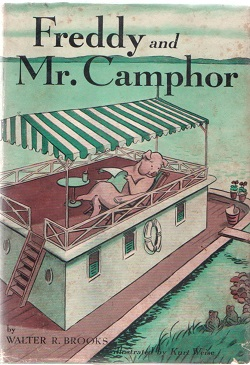
Freddy and Mr. Camphor (1944) is the 11th book in the humorous children's series Freddy the Pig, written by American author Walter R. Brooks and illustrated by Kurt Wiese. It tells of Freddy's adventures confronting trespassers when he takes a job as an estate caretaker.

Freddy and the Men from Mars (1954) is the 22nd book in the humorous children's series Freddy the Pig, written by American author Walter R. Brooks and illustrated by Kurt Wiese. It tells the story of the confrontation between Freddy and his friends, phony Martians, real Martians, and a circus con artist.
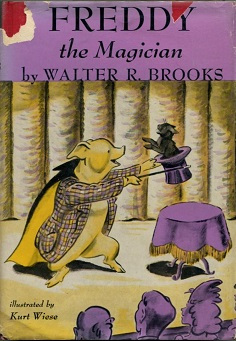
Freddy the Magician (1947) is the 14th book in the humorous children's series Freddy the Pig written by American author Walter R. Brooks and illustrated by Kurt Wiese. Freddy is ecstatic over the opportunity to learn magic tricks from a professional. However, it becomes apparent that this is part of a criminal plot to recover stolen money. Freddy and the Bean animals match their magic and wits onstage and offstage against the crooked magician.

Freddy and the Baseball Team from Mars (1955) is the 23rd book in the humorous children's series Freddy the Pig by American author Walter R. Brooks, illustrated by Kurt Wiese. Capitalizing on Martians' ability to pitch with any of four arms, Freddy creates a baseball team of Martians and circus animals to compete against neighboring towns. An old foe of Freddy's tries to rig the games.

Freddy Goes Camping (1948) is the 15th book in the humorous children's series Freddy the Pig written by American author Walter R. Brooks, and illustrated by Kurt Wiese. When a hotel owner is forced to sell under mysterious circumstances, Freddy and his friend Mr. Camphor pose as campers to investigate.

Freddy the Pilot (1952) is the 19th book in the humorous children's Freddy the Pig series written by Walter R. Brooks and illustrated by Kurt Wiese. When an airplane from a secret airstrip terrorizes the performances of his friend Mr. Boomschmidt's circus, Freddy learns to fly, then gets a plane to track the criminals and stop their activities.

Freddy the Pied Piper (1946) is the 14th book in the humorous children's series Freddy the Pig written by American author Walter R. Brooks, and illustrated by Kurt Wiese. It tells the tale of regathering circus animals following World War II, and of earning money to repair the disused circus equipment.
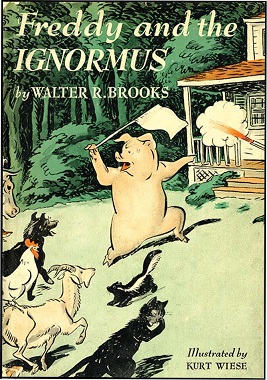
Freddy and the Ignormus (1941) is the 8th book in the humorous children's series Freddy the Pig by author Walter R. Brooks and illustrator Kurt Wiese. There are dramatic reports of a monster in the dark woods near the Bean farm. When local animals are subject to extortion, Freddy and his friends test their bravery confronting the unknown.

Freddy and the Bean Home News (1943) is the tenth book in the humorous children's series Freddy the Pig written by American author Walter R. Brooks and illustrated by Kurt Wiese. The story takes place when the United States was in the middle of World War II.
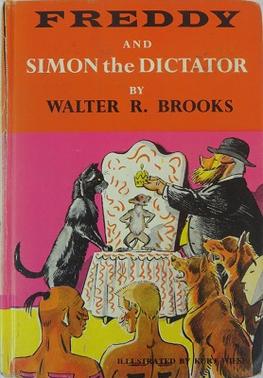
Freddy and Simon the Dictator (1956) is the 24th book in the generally humorous children's series Freddy the Pig written by American author Walter R. Brooks and illustrated by Kurt Wiese. It tells how animals in New York State rebel against humans, destroying property and taking control of farms. At the same time, Freddy’s friend Mr. Camphor is pressured into running for governor. The situations collide when animals take over Camphor’s estate, imprisoning the political figures there.
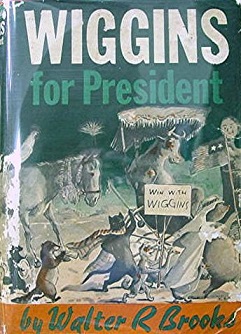
Freddy the Politician (1939) is the 6th book in the humorous children's series Freddy the Pig written by American author Walter R. Brooks and illustrated by Kurt Wiese. In this story, the Bean farm animals start a bank, and elect their first president, two institutions appearing through the rest of the series. Their honest and innocent approach is soon challenged by strangers from Washington.
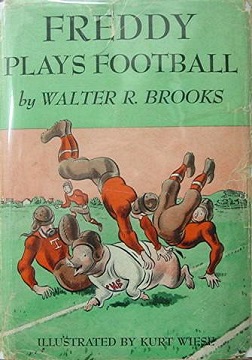
Freddy Plays Football (1949) is the 16th book in the humorous children's series Freddy the Pig written by American author Walter R. Brooks, and illustrated by Kurt Wiese. In it, Freddy and the Bean animals try to convince the Beans that Mrs. Bean’s long lost brother is a fake. Freddy lands in jail for stealing the money the fake is attempting to take. In the meanwhile Centerboro is taken with football fever on account of Freddy's playing.

Freddy and the Perilous Adventure (1942) is the ninth book in the humorous children's series Freddy the Pig written by American author Walter R. Brooks, and illustrated by Kurt Wiese. Freddy, ducks Alice and Emma, and the Webb spiders are cast on a voyage when a fairground balloon will not return to the ground. Days later when landing, Freddy must confront the dishonest balloon owner who received money from Mr. Bean for damages.















